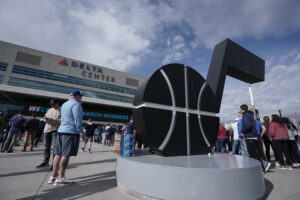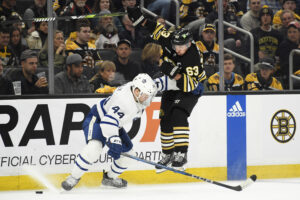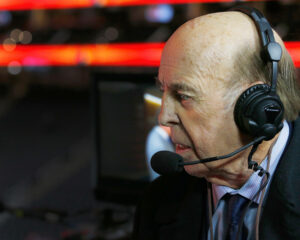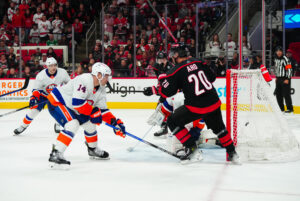Over the last several months, I have been crunching numbers, trying to solve the many questions of player development. With that, we here at Last Word On Hockey will be starting a new series on how to properly develop prospects from all different spots throughout the draft.
Developing NHL Prospects: Top 3 Picks
From 2005-2015, there have been 24 draft picks used on forwards from North American junior teams in the top 3. The focus was directly on North American prospects for the sake of comparing stats. I separated those 24 forwards from the rest of the top 3 picks in that span. Then, I looked at their DY-1 stats, the season before they get drafted, and their DY stats. I averaged out their points per game in their DY-1, DY and beyond, if necessary, and colour-coded them. The four sections were “well-above average,” “above average,” “below average” and “well-below average.”
Based on the sections they landed on before they played 15 or more games in an NHL season, they were separated into categories. The categories were “Forwards deemed NHL Ready,” “Forwards nearly NHL Ready,” “Slightly Rushed,” “Rushed,” “Forced,” “Teams were Patient,” and “Teams were way too patient.” There were two forwards who landed in the “slightly rushed” category, and those were Tyler Seguin and Nail Yakupov.
Player Development of Tyler Seguin
Tyler Seguin was drafted by the Boston Bruins 2nd overall in the 2010 NHL Entry Draft, and he was immediately thrust into an NHL role. This followed a DY-1 production of 1.098 points per game. His DY-1 production was deemed slightly below average compared to other top-3 picks. He followed that with a 1.683 point per game mark in his DY. This rate landed him in the above-average category. So, how did the Bruins use him despite him not being considered NHL-ready to this point?
How was Seguin used?
In his first NHL season, Seguin slotted into 74 games, averaging 12:13 of ice time per game. That really is not a lot. In that small role, Seguin would post 11 goals and 11 assists for 22 points. However, he posted below replacement-level analytics. His Even-Strength Offense (EVO) metric was a -1.2 score, while his Even-Strength Defense (EVD) was at a -0.9 score. His Wins Above Replacement (WAR) was also below replacement level, at -0.3, while his Goals Above Replacement (GAR) landed at -1.8.
Despite a pretty bad rookie year, the Bruins instilled trust in their 2nd overall selection. Seguin played in 81 games in his sophomore season, averaging a much larger 16:56 time on ice per game. He recorded 29 goals and 38 assists for 67 points. His analytics were much better. Seguin’s EVO stood at 16.1, while his EVD was a solid 2.6. His WAR rose drastically to 3.7, as did his GAR, to 21.2.
Finally, in his third season, Seguin played all 48 games of a lock-out shortened season. He averaged an increase in ice time yet again, this time recording a 17:01 average per game. With that raise, Seguin potted 16 goals and 16 assists for 32 points. His analytics dropped, however. His EVO landed at 6.3, while his EVD stood at 0.8. Meanwhile, his WAR landed at 1.4, while his GAR landed at 7.6. The Bruins would go on to trade Seguin to the Stars in the following off-season, where his role rose significantly and he became their number one center for the long haul.
Player Development of Nail Yakupov
Nail Yakupov, arguably the biggest bust in NHL history, is one of the most intriguing players I will be looking at in this series. After posting a 1.554 point per game pace in the OHL in his DY-1 season, he landed in the well-above-average threshold in this project. However, he followed that season up with a 1.634 point per game pace, which landed in the below-average category. Regardless of him not taking a very big stride in his DY, the Edmonton Oilers selected Yakupov 1st overall. They threw him to the wolves that is the NHL directly following the draft.
How was Yakupov used?
In his rookie season, Yakupov was dealt a poor hand that was an NHL lock-out. Playing all 48 games that season, he averaged 14:34 minutes of ice time per game. Potting 17 goals and 14 assists for 31 points in those games, Yakupov’s analytics were also respectable. Recording a 4.1 EVO and a -3.6 EVD, Yakupov showed his strength on the attack. His WAR landed at a 0.1 score, with his GAR finishing at a 0.7 mark.
Despite the relative success of his first NHL season, the Edmonton Oilers actually cut down slightly on his role, while he also dealt with missed time. Playing just 63 games and averaging 14:19 of time on ice per game, he recorded just 11 goals and 13 assists for 24 points. His EVO dropped to 2.1, while his EVD rose a bit to -2.5. His WAR dropped slightly to an even 0, with his GAR also landing at the 0 mark.
In his third season, Yakupov would play 81 games. However, he wouldn’t be given much of a raise, averaging 15:27 of ice time per game. He would post just 14 goals and 19 assists for 33 points in that role. It seems as though the ship had already sailed on the Yakupov selection. His EVO would fall dramatically to -1.8, while his EVD returned to its abysmal range, scoring a -7.3 in that metric. His WAR dropped further to -0.8, while his GAR dropped dramatically to a -4.4 score. Over the next three years, he would play for Edmonton, the St. Louis Blues and the Colorado Avalanche before returning to the KHL.
Player Development For These Players
Yakupov posted a modest rookie season. In fact, his analytics were pretty close to what Stamkos posted in his rookie season. However, while Stamkos was given a raise, Yakupov was not. There were also the off-ice issues with Yakupov. He once told reporters at the Edmonton Sun, “I really don’t like skating without the puck, skate all the time and do forecheck and hit somebody every shift. I don’t think it’s my game.” That mind-set is why, after a setback in terms of his sophomore season deployment, set off the downfall of Yak. There are many what-if’s that can be made. Considering how bad Yakupov was defensively, it shouldn’t be a surprise he wasn’t going to receive a bigger role. Yet, his offensive contributions were better than Stamkos’ in his rookie year, analytically, and Stammer won a Rocket Richard trophy in his very next season, thanks to a major raise.
Yakupov, with his seemingly lazy mentality and not being very easy to coach, may not have become a great player regardless. But maybe, just maybe, if he was given a bigger role in each season similar to Stamkos, then he would’ve turned out to be a more competent player. Not to mention, in his final season in Edmonton, a man named Connor McDavid was thrust into the lineup. If the coaching staff gave Yakupov a bit more time on the ice and a bit more confidence was instilled in him, a McDavid and Yakupov duo could have been strong.
As for Seguin…
Meanwhile, Tyler Seguin was somewhat similar, in a sense, to Yakupov. Seguin did not have the best relationship with head coach Claude Julien in Boston. Not to mention, Julien is notorious for sticking with the veterans over youngsters. Yet, Seguin was still given a larger role with each passing season. This set him up for stardom when he was traded to a team with a system and coaching staff better equipped to utilize a player in Seguin.
It comes as no surprise that Seguin turned out to be a hell of a lot better than Yakupov. His role rising throughout the first three years of his NHL career, despite a pretty horrible rookie season, allowed him to get his feet set. Once released from the stranglehold of Julien in Boston, he thrived.
Yakupov’s tenure was horrible in Edmonton. He did not have the mental toughness that Seguin had to get past a poor relationship with his head coach. That led to a loss of confidence. That led to him not working well with another coaching staff, with new teammates. With all of that said, Yakupov’s departure to the KHL was warranted. Maybe a raise in confidence out in Russia could lead to an NHL revival for Yak. Only time will tell.






